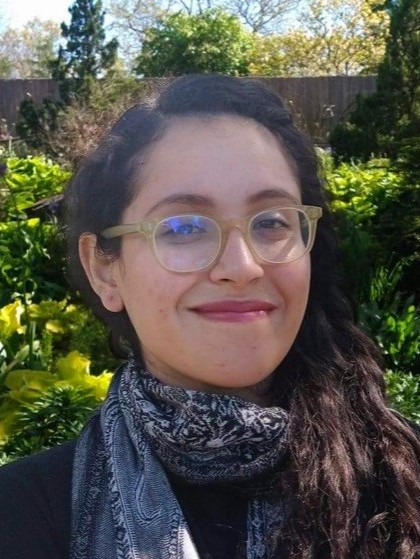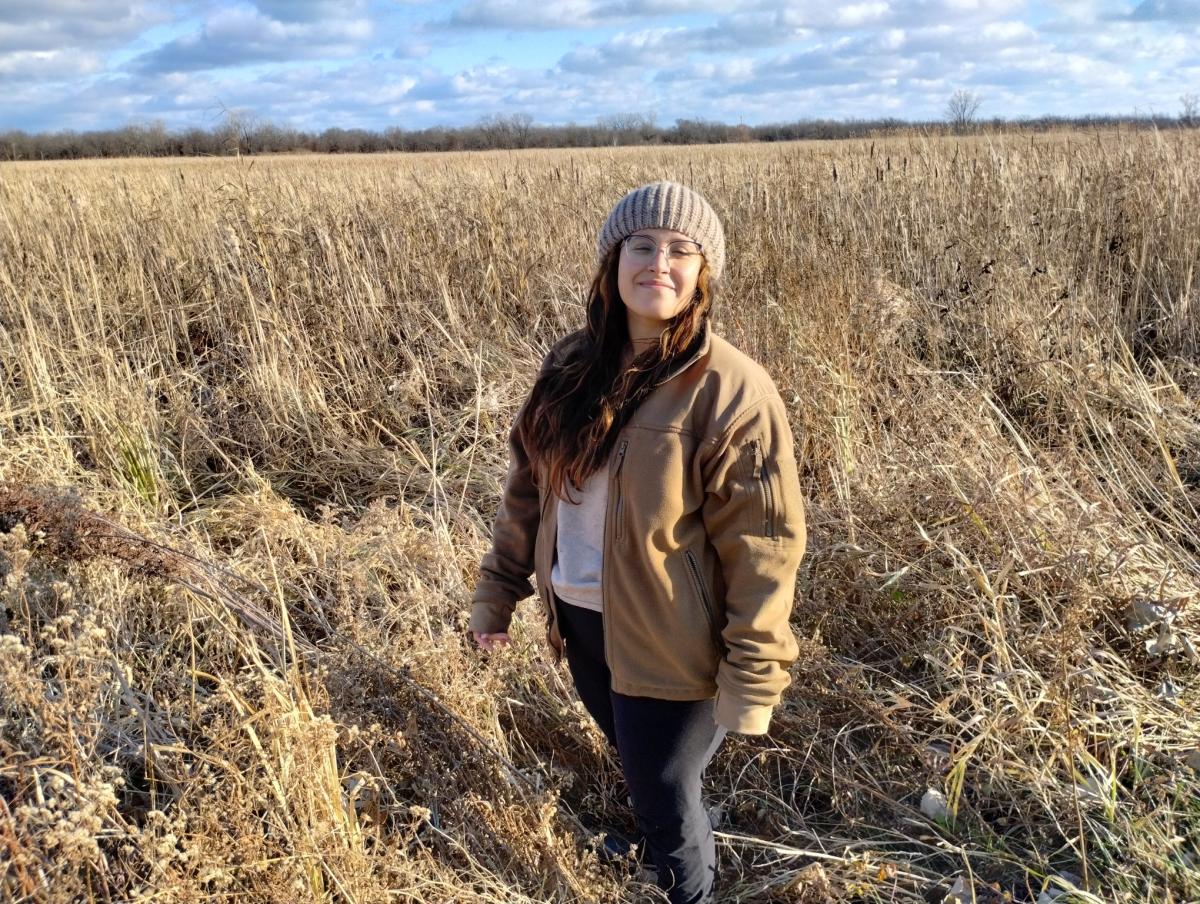Advisor(s): Craig Allen, Gwendwr Meredith

Working at the nexus of ecology and sociology
Katia Carranza is an environmental scientist focused on people.
“I see people as part of nature, which is not typical in the environmental fields that tend to focus on nature and not people,” she says. “Environmental fields often don't recognize that people are part of the environment and that their well-being also has to be improved.”
Carranza came from Duke University to Nebraska in 2021 to study how people, plants, animals and disturbances interact on land and affect resilience.
In one part of her master’s project in natural resources, she is surveying and interviewing Lakota people to better understand how they conserve ecosystems and how that affects the resilience of their communities. In another part, she is comparing the results of land management through rotational grazing versus fire and grazing.
“Fire has been a very important driver in shaping rangeland resilience, but it has largely been excluded over the past 500 years since Indigenous management was displaced,” Carranza says. “Now you're seeing a lot of big wildfires because you don't have that small disturbance of fire in the landscape that reduces the fuel for big wildfires. Also, fire was important in maintaining the native plant communities and native bird communities that depended on it.”
The Buffalo Nations Grasslands Alliance, an Indigenous-led organization, is collaborating with her and helping identify land users rather than landowners to survey on the Pine Ridge and Rosebud reservations.
“A lot of the research in U.S. rangelands is on Western people, is on ranchers,” she says. “That's why there's a real need to look at diverse communities in rangelands and to focus beyond the landowners to really focus on how different land users interact. That incorporates a lot of dimensions of equity because landowners have more power, more influence.”
She is also working with Craig Allen, natural resources professor, at the Barta Brothers Ranch near Rose, Nebraska, to study the effects of prescribed burns on plants and animals.

Many U.S. programs call for rotational grazing and aim to reduce disturbances like fire, but Carranza says disturbing the land through fire and grazing may be better at building resilience and providing ecosystem services.
Ecosystem services are commonly defined as benefits that nature provides people, but Carranza says Indigenous people see them differently.
“They see it as more reciprocal, as ecosystem relationships,” she says. “That more encompasses how we impact nature and how nature impacts us. They use relationships because services is still a very extractive term, like ‘What can nature give us?’”
Differences in viewpoints between Western scientists and Indigenous scientists often center on ecosystem services, Carranza says.
“I think that the main way Western science considers ecosystem services is in terms of economic valuation,” she says. “A part of that is because this society speaks money, but Indigenous people critique that because they say that is commodifying nature and going to actually cause more harm. Also, some services are invaluable and you cannot value them in terms of money.”
Assigning an economic value to nature is a Western method and can endanger people because they are part of nature, Carranza says.
“Indigenous people and others say that that is going to lead down a slippery slope of giving an economic value to life,” she says.
Although she has yet to survey Lakota land users, she has learned more about Indigenous science and viewpoints through related work and contacts. She serves on the Indigenous working group of the Central Grasslands Roadmap and works with Diana Doan Crider, a researcher at Salish Kootenai College who serves on her supervisory committee, and Emily Boyd-Valandra and Monica Rattling Hawk of the Buffalo Nations Grasslands Alliance.
She also held social work jobs after earning her bachelor’s degree in ecology from Beloit College in Wisconsin, organizing for migrant rights and environmental justice and working with underserved people.
“The gap I had in the work I did in the social fields really trained me to work at an interdisciplinary level and do community-driven work and work equitably because you have to actively work equitably to work with Indigenous people that have long been exploited by society and by science,” she says.
She is now looking at community resilience in terms of access to ecosystem services, she says.
“Indigenous people face a lot of barriers with accessing a lot of ecosystem services, or natural resources, specifically because a lot of treaties have been violated,” she says. “They're not even allowed to use their natural resources that they were guaranteed.”
Carranza says she would like to address such conservation injustices in her work and hopes to use the degree she is earning to do research in a community-driven manner.
“The research that I wanted to do, I wanted to plan it so that it was based on community needs and priorities, specifically in terms of Indigenous people, not based on what interested me or what I find most important, which is often how science is done,” she says. “So, a lot of it has been learning how to do this.”
— Ronica Stromberg, NRT Program Coordinator


